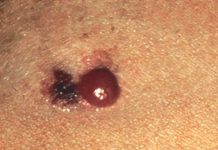Hemophilia is a genetic blood disorder that results in blood not clotting properly. A person with hemophilia lacks completely or has very little protein or ‘clotting factor’ and is unable to clot their blood. There are 13 different clotting factors and these work with the platelets in your blood to help form clots. There are around 100,000 people across the world born with hemophilia.
Hemophiliacs tend to bleed a lot easier than those without the disease, and their blood can take a lot longer to form clots meaning that they are more at risk of bleeding to death. They can suffer from spontaneous bleeding or internal bleeding which can lead to swollen, painful joints.
In an unaffected body, the ‘coagulation cascade’ is what stops you bleeding after a cut or a bump. When you are wounded, blood platelets will gather around the site to form a clot and all 13 of your clotting factors basically make a plug. If you are lacking in any of these factors (a hemophiliac) you will continue to bleed.
There are 3 different types of hemophilia – hemophilia A, hemophilia B, and hemophilia C.
Type A is the most common form of the disease and is caused by a deficiency in factor VII. 80% of hemophiliacs have type A.
Type B is the deficiency in factor IX.
Type C is a milder form of type B, however spontaneous bleeding is not common with this type. Hemophilia C generally leads to hemorrhaging after a trauma or surgery.
Hemophilia is generally diagnosed in the 1st year of a child’s life and is most common in boys. The gene that causes the disease is ironically inherited from the maternal side though. Hemophilia is not a curable disease but it can be treated to keep symptoms and complications minimal.
The disease cannot be prevented – there is no way of telling if a fetus has the disease, though, if you are using IVF, embryos can be tested and only the embryos without the disease will be implanted.














